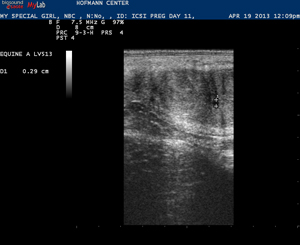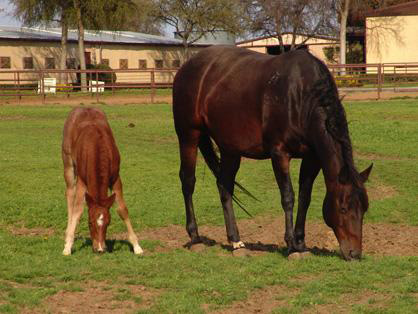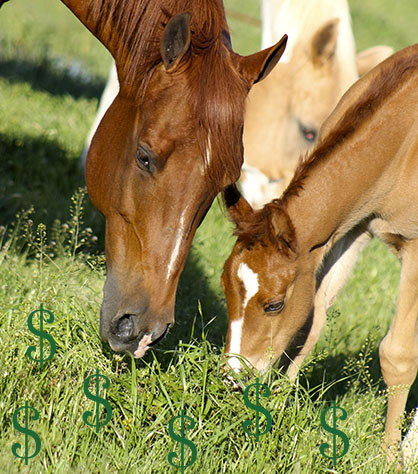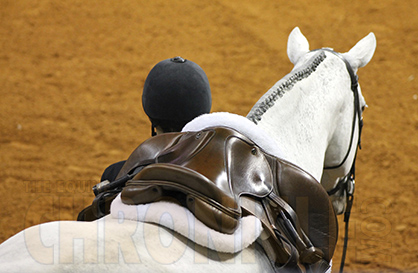Free Equine Lectures Open to the Public: Neurological Exams, Lameness Diagnosis, 3-D Printing in Vet Medicine and More
August 3, 2016 Comments Off on Free Equine Lectures Open to the Public: Neurological Exams, Lameness Diagnosis, 3-D Printing in Vet Medicine and More
Penn Vet’s New Bolton Center offers free lectures to the public on equine topics on the first Tuesday of selected months. The following is the schedule for the 2016-2017 academic year.
Continue reading …Modern Electrolytes are More Than Salt
August 1, 2016 Comments Off on Modern Electrolytes are More Than Salt
Every horseperson has seen and felt the white grit that remains on a horse’s coat long after he’s dried from sweating. But do you know what that is?
Continue reading …Scientists Confident They Have Identified Vaccine for One of Deadliest Equine Viruses
July 29, 2016 Comments Off on Scientists Confident They Have Identified Vaccine for One of Deadliest Equine Viruses
African horse sickness (AHS), is caused by a virus transmitted by Culicoides biting midges. It is one of the deadliest viruses to affect horses; causing up to 90% mortality in susceptible animal populations and huge economic losses for the equine industry, as well as for owners of working horses. It is prevalent (or endemic) in central and sub-Saharan Africa, but major outbreaks have also been reported in the Middle East, India, Pakistan, Spain, Portugal and Morocco.
Continue reading …Meeting Your Horse’s Increased Summer Hydration Needs
July 29, 2016 Comments Off on Meeting Your Horse’s Increased Summer Hydration Needs
Horses can lose water volume up to 4 gallons per hour, and as much as 4 ounces of salt per hour. The Sodium in salt, which is Sodium Chloride, is absolutely essential for the horse’s body to retain normal, healthy levels of water. Regardless of how much water the horse drinks, it will not be able to retain a normal amount of water in the body without adequate Sodium, or salt.
Continue reading …AHC Will Update Economic Impact Study of Horse Industry in 2017
July 28, 2016 Comments Off on AHC Will Update Economic Impact Study of Horse Industry in 2017
The 2005 Economic Impact Study documented the economic effects of the racing, showing, recreation and other segments of the horse industry. It established that the horse industry in all its segments, including racing, showing, and recreation, had a $39 billion effect on the US economy, involved more than 4 million Americans and 9.2 million horses, and supported 1.4 million full-time jobs. The study also provided invaluable demographic data and insights into professions and other industries that are impacted by the equine ownership.
Continue reading …Interventional Ultrasound: Changing the Way Equine Vets Manage Patient Problems
July 27, 2016 Comments Off on Interventional Ultrasound: Changing the Way Equine Vets Manage Patient Problems
“Interventional ultrasound can be used to perform minimally invasive procedures in horses from the removal of foreign bodies and fracture fragments to surgical procedures such as patellar ligament splitting,” Dr Whitcomb said.
Continue reading …What’s New in Equine Surgery? Standing Versus General Anaesthesia
July 26, 2016 Comments Off on What’s New in Equine Surgery? Standing Versus General Anaesthesia
I’ve witnessed cases where surgery under general anaesthesia is both dangerous and unnecessary, for example, in the surgical treatment of splint bone fractures. The other key area where surgery is associated with complications during recovery from anaesthetic is fracture repair. These sort of complications can now be avoided thanks to our ability to perform surgery in the standing sedated horse,” he said.
Continue reading …Vet Checks- It’s Not a Simple Pass or Fail
July 22, 2016 Comments Off on Vet Checks- It’s Not a Simple Pass or Fail
When it comes to pre-purchase examinations, the veterinarian’s job is neither to pass nor fail a horse. Rather, it’s to provide the purchaser with information about existing medical problems and explain the possibility of future ones – especially in light of the horse’s intended use.
Continue reading …Horse Castration – What Could Possibly Go Wrong?
July 20, 2016 Comments Off on Horse Castration – What Could Possibly Go Wrong?
“The reality is that complications following castrations is quite common and include swelling, hemorrhage and infection. There are, of course, effective ways to manage or treat these complications, but what continually surprises me is the reaction of owners when their horse does have a complication following surgery.”
Continue reading …New Technique to Treat Kissing Spine in Horses
July 18, 2016 Comments Off on New Technique to Treat Kissing Spine in Horses
“It’s normal for horses to show significant postoperative pain following conventional open surgery of the dorsal spinous process. However, with this relatively new technique, postoperative pain is unusual, horses are discharged the following day with oral antibiotics and the recovery time is much faster,” Dr Bladon said.
Continue reading …







